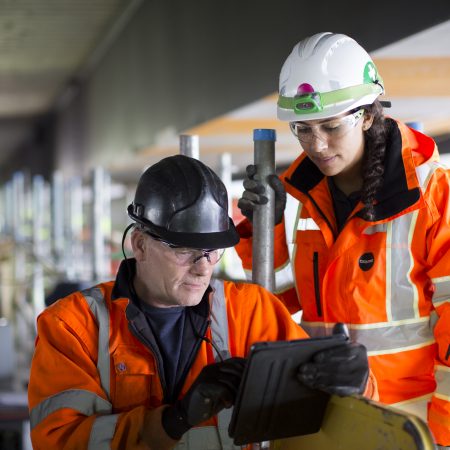Data and the Construction Industry
“How we use data will transform our projects and the quality and quantity of data collected by a business can significantly influence its competitive advantage and sustainability.
Data is invaluable when effectively collected and analysed and subsequently translated into meaningful information. Information relating to a range of scenarios can then be available for forecasting, optimisation and operations planning. Making decisions based on data as opposed to pure intuition vastly increases the chance of success and therefore data can be used to influence strategic decision making. Importantly risks are better understood and managed.
Are we utilising our data effectively?
Osborne is currently undertaking the Gade Valley Viaduct (GVV) Project; strengthening the viaduct alongside corrosion protection. The GVV Project Team have been utilising Autodesk BIM360 Field as a data capture tool, in the form of checklists, to carry out Quality Assurance (QA). It allows a centralised point of data collection and opens up the opportunity for making data-driven decisions.
The Gade Valley Viaduct carries the east and west bound carriageways of the M25 between junctions 20 and 21. Structural assessments have identified a shortfall in fatigue life of the structure. The strengthening involves the installation of 1707 steel plates and the corrosion protection involves the application of over 25,000 litres of paint. In addition to the main works, there are on-going inspections of the bridge to identify any cracks. Consequentially there are many quality assurance (QA) checks associated with these works. To date approximately 70% of works have been completed, generating in excess of 5000 QA checklists.
Implementing the use of BIM360 Field
In addition to the main works, there are on-going inspections of the bridge to identify any cracks. When a crack is found it is recorded as an issue along with information about the crack, including photos, and this is all assigned to the specific location on the model. This information is immediately shared with the designers enabling them to make well informed decisions about the repair required and any requirements for emergency road closures.
The ability to make well informed decisions allows the team to ensure the safety of the public without causing unnecessary disruptions.
Any subsequent repairs carried out are recorded in the same location allowing our client access data about the repairs carried out on the structure, easily in the future. This will help to improve asset lifetime and maximise usability.The immediate benefits of site based data capture can clearly be seen; for starters there are not folders of information cluttering up the site office, but have we truly realised its potential?
The future of data
Whilst we are making strides in the collection of data for individual projects we are still not collating this effectively to create ‘big data’. Big data constitutes extremely large data sets that can be computationally analysed; revealing patterns, trends, and associations. For example, with bridge failure big in the news right now, information from structures such as Gade Valley could be used to determine trends in defects and failure mechanisms. This has the potential to inform future improvements to structures, allowing us to plan and design improvements effectively and quickly address issues. This is just the tip of the iceberg on what is possible.
So what do we need to do?
Data capture tools are often seen as a hindrance; an unnecessary extra piece of work and expense that add no benefit. We need to shift opinions and, using projects such as a GVV as an example, showcase how it can be used as an advantage to all parties. Our delivery teams will be convinced by interacting with other delivery teams who have seen and lived the benefits. Those who have worked on a data rich project need to be prompting future projects to be just as, if not more, data rich.
Our customers will be convinced by promoting the benefits of data collection using examples of projects where it has been a success. As well as promoting the use of the tools we need to makes sure it is easy for our customers to access the data; by ensuring the seamless sharing of data across different systems and sectors. We also need to be mindful that in a lot of our projects, we do not interact with the asset manager. This is the person who needs to take on-board data collection and on-going use more than a transient client; it is therefore not only client opinion that needs to change but the end user. Interacting with the end user to promote the benefits will also be key for progression in this area. Only then will we truly be able to capitalise on the benefits of capturing data
There is a lot of progress that needs to be made, but informing and influencing the design of our future through big data will lead to a better customer and user experience and I truly believe it will allow us to produce improved projects.”
Safia Whitwham is an Assistant Site Manager at Osborne.

